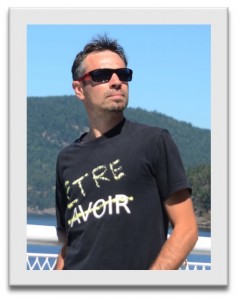 Nicolas Estrade
Nicolas Estrade
Postdoctoral Fellow
University of British Columbia
As an environmental isotope geochemist, I study variations in the abundances of stable isotopes in modern earth and ocean cycles. These variations result from biogeochemical transformations or source mixing between environmental reservoirs. Measuring variations in isotopic compositions with state of the art mass spectrometers and interpreting related processes is fundamental for i) solving elemental mass balances on Earth, ii) determining the magnitude of complex biogeochemical processes, and iii) reconstructing the state of contaminated ecosystems.
After completing an MSc in environmental chemistry, I received a PhD in environmental isotope geochemistry in 2010 at the University of Pau, France. After a career break, I undertook a one-year post-doctoral position at the University of Lorraine in France (2012-2013) in isotope geochemistry and soil sciences. I then joined the MAGNET program at UBC (Vancouver) as a post-doctoral fellow in October 2013, and have been working with isotope geochemistry and oceanography under the supervision of Dr. Dominique Weis and Dr. Roger François. I completed the MAGNET position in October 2015 and I’m now back in France at the LEGOS, OMP in Toulouse as a post-doctoral fellow.
My current research focuses on the use of the isotopic signatures of major and trace elements under three intimately linked topics:
- At the Earth’s surface (Ni isotopes, U. Lorraine): During weathering, metals and nutrients are leached out of rocks and fractionated between solid and dissolved phases. Biotic processes, such as vegetation growth or microbial activity, also fractionate isotopes and dramatically redistribute elemental fluxes on the surface. Ultimately, a significant flux of solid and dissolved matter is exported to rivers, which can be characterized by the extent of isotopic fractionation between different reservoirs.
- From land to ocean (Si isotopes, UBC, Si and Ni isotopes LEGOS): Many nutrients and metals play an important role in climate and ocean cycles; however, their mass balances are poorly constrained. For example, a paradox exists between the isotopic compositions of rivers and oceans that can only be explained by contribution from other sources. One potential source is lithogenic particulate matter from rivers deposited onto continental margins, as it has the potential to dissolve on short timescales. Boundary exchange processes (dissolution, adsorption/desorption) on continental margins could be a significant source of these elements to the ocean and thus needs to be quantified. These processes are known to fractionate isotopes and may leave a distinct isotopic signature in the dissolved phase (seawater).
- Environmental contamination (Hg isotopes, PhD Univ. Pau) and reconstruction of ecosystem states using environmental archives (Hg, Ni isotopes, Current collaboration Univ. Pau and the German Environmental Agency, Germany): Hg isotopes are powerful tools for tracing sources of contamination in soils, the atmosphere, and living organisms. In biological samples, isotopes also reflect both the contribution of the environment and in-vivo processes. Measuring isotopic compositions in biological samples that have been archived in environmental specimen banks, which provide large temporal (>20 years) and spatial (stream, river, watershed) resolution, can provide new insights into deciphering biogeochemical processes of contaminated ecosystems and forecast their evolution.
Last updated September 2015


 Catherine Armstrong
Catherine Armstrong Laura Bilenker
Laura Bilenker Priyanka Chandan
Priyanka Chandan Carol Cheyne
Carol Cheyne June Cho
June Cho Sarina Cotroneo
Sarina Cotroneo Jamie Cutts
Jamie Cutts Fiona D'Arcy
Fiona D'Arcy Ashley Davidson
Ashley Davidson Nicolas Estrade
Nicolas Estrade Anaïs Fourny
Anaïs Fourny Evelyn Frères
Evelyn Frères Elizabeth King
Elizabeth King Alexander Lemieux
Alexander Lemieux Miling Li
Miling Li Marc-Antoine Longpré
Marc-Antoine Longpré Gregor Lucic
Gregor Lucic Kalina Malowany
Kalina Malowany Eduardo Mansur
Eduardo Mansur Jill McDermott
Jill McDermott Rhy McMillan
Rhy McMillan Aleksandra Mloszewska
Aleksandra Mloszewska Nichole Moerhuis
Nichole Moerhuis Emily Mullen
Emily Mullen Genna Patton
Genna Patton Jean-David Pelletier
Jean-David Pelletier Elizabeth Phillips
Elizabeth Phillips Nabila Rahman
Nabila Rahman Lindsay Reynolds
Lindsay Reynolds Luiz Felipe Salim Amaral
Luiz Felipe Salim Amaral Cheyenne Sica
Cheyenne Sica Elliott Skierszkan
Elliott Skierszkan Kate Smith
Kate Smith Natalie Szponar
Natalie Szponar Victoria Tweedie
Victoria Tweedie Tom Ver Hoeve
Tom Ver Hoeve Clara Waelkens
Clara Waelkens Nicole Williamson
Nicole Williamson Anne Wozney
Anne Wozney Wang Zheng
Wang Zheng


 Site by Sprout Creative
Site by Sprout Creative